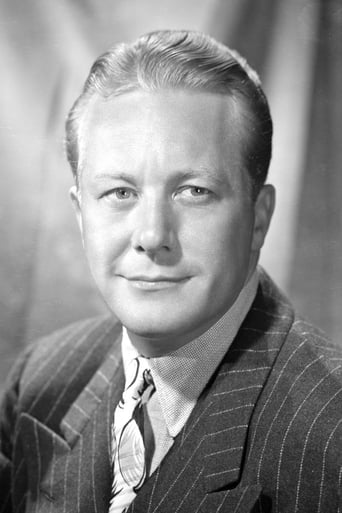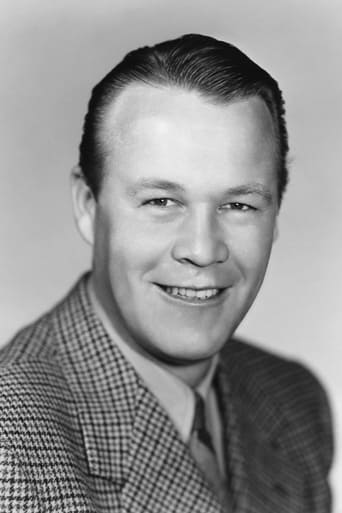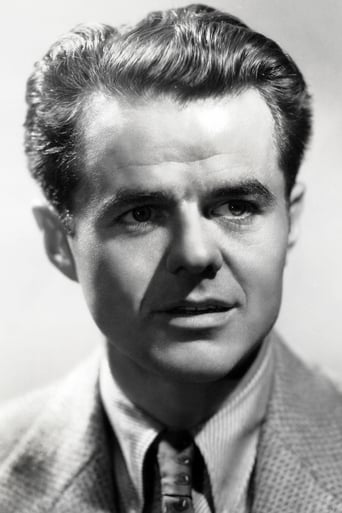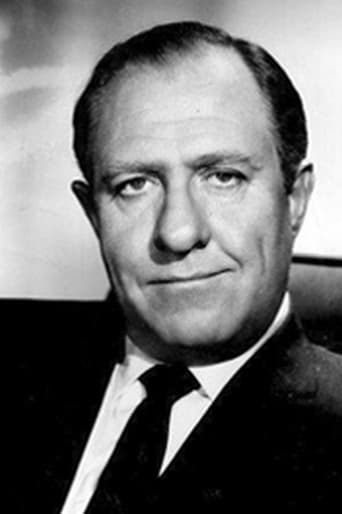SnoReptilePlenty
Memorable, crazy movie
Comwayon
A Disappointing Continuation
StyleSk8r
At first rather annoying in its heavy emphasis on reenactments, this movie ultimately proves fascinating, simply because the complicated, highly dramatic tale it tells still almost defies belief.
zardoz-13
Director Hubert Cornfield's heist caper "Plunder Road" was made when Hollywood prohibited criminals from getting away with their criminal endeavors. Five men, Eddie Harris (Gene Raymond of "Red Dust"), Commando Munson (Wayne Morris of "Paths of Glory"), Skeets Jonas (Elisha Cook Jr., of "The Maltese Falcon"), Roly Adams (Stafford Repp of ABC-TV's "Batman") and Frankie Chardo (Steven Ritch of "Seminole Uprising"), stage a daring night time robbery of a train transporting gold bullion to San Francisco. The first ten minutes or so concern the actual hold-up itself with the hoodlums gassing the guards and slugging the train engineer unconscious. The next forty-five minutes depicts the road trip that the robbers take in three separate vehicles. Eddie and Frankie cruise along in a tanker truck. Commando and Skeets drive a rental truck with coffee used to conceal their load of the bullion, while Roly drives a truck carrying furniture. Cornfield has pared this crime caper down to its absolute essentials. Roly is caught first when he doesn't make it through a roadblock because he leaves his police band radio turned on. He makes a futile effort to get away, but the police shoot him in the back. Eddie and Frankie roll up not long afterward and spot the authorities taking Roly's body away in an ambulance. Meanwhile, Commando and Skeets pull up to fill up at a gas station. Commando gets into a conversation with the old-timer who is filling up the truck. The old-timer inquires about his oil. When Commando raises the hood, his automatic pistol falls out and he has to murder the attendant. Finally, Eddie and Frankie make it to Los Angeles without incident and smelt their gold bullion down at a warehouse. Pollution officials interrupt Eddie and company and write them a citation. By this time, Eddie's girlfriend Fran Werner (Jeanne Cooper of "The Intruder") begs him to call things off, but Eddie complains that they have gone through too much to back out now. Our protagonists melt the gold down into hubcaps and other body parts for a Cadillac and cruise onto the freeway when disaster strikes. As Frankie is tooling along the freeway, they pass an accident, and a woman driver behind them spends too much time rubbernecking at a crashed car and rear-ends our protagonists. Naturally, the uniformed cops appear to help untangle the bumpers when they notice that Eddie's car has a gold bumper.There isn't much room for characterization in this taut drama. Similarly, there isn't much sentiment either. Cornfield generates suspense and tension from the moment that the thieves pack up the bullion and head cross-country to Los Angeles. Naturally, scenarist Steven Ritch, working from a story by Jack Charney and he, has to dream up ways for the thieves to blunder. If only Roly had kept his police radio turned off. If only Commando has kept a close watch on his automatic pistol! Why did Eddie have to melt the gold into a rear bumper? Couldn't he have melted the bullion into other car parts? Remember, back in the 1950s, crime didn't pay, so our protagonists are simply living on borrowed time. Nevertheless, "Plunder Road" is qualifies as a suspenseful, white-knuckled exercise in crime.
Michael O'Keefe
Strong B-Film Noir directed by Hubert Cornfield. Steven Rich's story and screenplay stars Gene Raymond as Eddie Harris, a professional thief leading a group of amateurs in a well thought out plan of robbing a train bound for the San Fransico mint. About $10 million in gold bullion is split into three trucks and begin a treacherous trek to Los Angeles. Each piece of the successful heist is traveling along separate routes; but two are intercepted. Eddie manages to reach the destination, but he must outmaneuver the outrageous L.A. traffic to escape capture.A 72 minute action, crime flick with a good share of tension. Other players: Jeanne Cooper, Elisha Cook Jr., Wayne Morris, Stafford Repp, Naura Hayden and the writer, Rich.
potfilms
Enjoyable B movie, nicely shot in black and white and "Regalscope".Wonder if the writers had seen the 1951 British comedy THE LAVENDER HILL MOB which had a similar solution for smuggling gold bullion as the last car in this? It is always a little dispiriting to know in advance with crime thrillers in this Production Code Enforcement era, that no matter how clever the crooks or plotting, they won't get away with it, and there will be a shift in sympathy away from the criminals at some point (the gratuitous murder of the garage owner.) Hubert Cornfield went on th o make some more interesting movies including PRESSURE POINT and NIGHT OF THE FOLLOWING DAY with Marlon Brando.
goblinhairedguy
Being primarily a visual medium, one of the things film does best is illustrate the mechanics of complex items. I refer not only to the machinations of the caper plot so well achieved here, but also to big machines themselves -- trains, trucks, assembly lines. Many a great director has used the relentless workings of machines as a metaphor for inescapable fate -- think especially of Fritz Lang and the openings of Human Desire and Clash by Night.The stars of Plunder Road are the machines themselves -- the overburdened trucks inching their way to freedom, the massive crane and huffing sabotaged train in the rain-pelted robbery scene, the bubbling cauldron at the foundry contributing to the ingenious escape plan, etc. The human characters are sketched briefly, with impressionistic strokes, but it's the mute mechanical accomplices that drive the plot and stick in the mind. This is best illustrated by the cleverly-inserted visit of a smog inspector, and again in the cruelly ironic downfall of the protagonists, who are at the mercy of their guileless vehicles.




